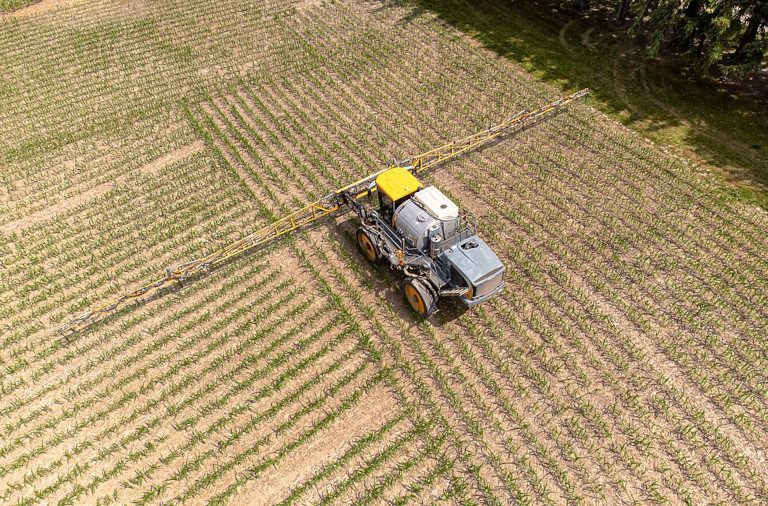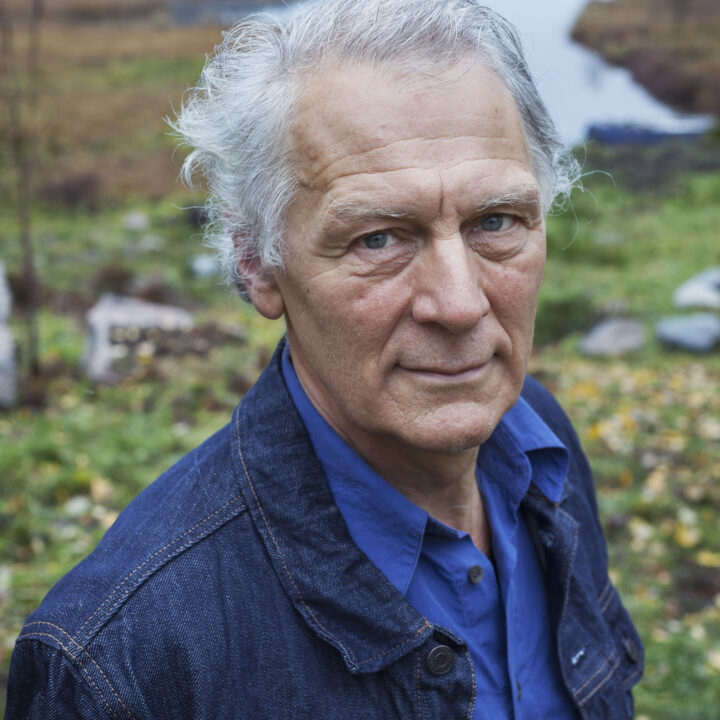Nitrogen (N) is on the one hand an essential nutrient for all life forms and the building block for proteins, and on the other hand a pollutant causing many negative environmental and human health impacts. The introduction of synthetic nitrogen fertilizer during the 20th century revolutionized the entire food system. On surface it has led to a dramatic increase in yields, even if the often quoted claim (e.g. by Our world in data) that without them the global population would be half the size or without them half of the global population would starve to death, is most certainly exaggerated*.
N-fertilizers have had an even stronger effect in the remodeling of the agri-food system into linear models, simplification, monoculture, separation of land and livestock production as well as humans, changing diets and a global oversupply of agriculture commodities as well as the onslaught of small farms. The impacts also reach into our guts and minds as well as into the life of the soil.
I will, tentatively, write five nitrogen articles in a row. This first one is about the macro scale effect on the environment. The second on how N-fertilizers have impacted the agri-food system on a system and farm level. The third on the impact on our food and health, the fourth on impact on soil and finally a fifth article about a food system which is not dependent on N-fertilizers.
Let us first begin with some basic N-facts. Nitrogen gas (N2, i.e. it exist as a molecule with two N-atoms tightly bound together) makes up about 78% of the atmosphere. It is inert and doesn’t interact with living organisms even though there are some living organisms that have the ability to transform nitrogen gas into reactive nitrogen. All other forms of nitrogen (e.g. nitrate, ammonia) are “reactive” and are used by plants as a main building block for protein or participate in other processes. In the natural environment, N2 is converted to reactive N by biological nitrogen fixation (by bacteria either in symbiosis with plants or free-living) and by lightning. Our industrial civilization produces reactive nitrogen purposely as synthetic fertilizers using the Haber-Bosch process, a chemical process developed 100 years ago (one can make synthetic fertilizers also by other processes). In addition to this, some reactive N is added through atmospheric deposition of N oxides (NO and NO2, jointly called NO×) which are created from atmospheric N2 by combustion e.g. in diesel engines and power plants.
Plants need a number of elements for their growth. They get carbon, oxygen and hydrogen from the air and the water. The other elements come from the soil one or the other way. Of these Nitrogen (N), phosphorous (P) and Potassium (K) are the most important. But at least 10 more elements are essential for plants. N-fertilizer is by far the most important and the focus for my discussion here, but often N, P and K are used together in NPK-fertilizers. For specialty crops or for soils with certain properties, farmers may use other formulas with secondary elements and micro-nutrients
When reactive N is applied to crops, a smaller share ends up in the harvested product (I will discuss that in more detail later) while a huge share is spread into air or water in many different ways. The reactive N from the agri-food system are primarily in the form of ammonia (NH3) and nitrate (NO3−). Emissions of nitrous oxide (N2O) and nitrogen oxides (NO×) are quantitatively much smaller, but they still have huge impacts.
The greatest experiment in global geoengineering
The level of reactive nitrogen in the biosphere has been described as perhaps “the greatest single experiment in global geoengineering ever made” by the European Science Foundation (2013). When reactive nitrogen spread across biomes it changes them in a fundamental way, perhaps even more than climate changes does. The researchers behind the planetary boundaries framework estimate that the “safe” annual addition of reactive nitrogen to the biosphere is half of the current use of synthetic N-fertilizers (Richardson et al 2023). In addition to global warming, reactive nitrogen in its various forms contributes to environmental impacts, such as eutrophication, acidification, biodiversity loss, toxic air and groundwater pollution, stratospheric ozone depletion. A few examples are given below.
One team of researchers estimates that current species richness values in Great Britain – when averaged across five widespread habitat types – are approximately one-third less than without N deposition (Payne et al., 2017). The Netherlands is a country that has a huge problem with nitrogen overload which has led to drastic measures including the buy-out of farms for closure. Recent research from the Netherlands shows that N deposition seems to have a stronger effect than previously estimated and that many sensitive habitat types show a decreasing trend in quality already at low nitrogen deposition (Wamelink et al 2024).
Globally, the discharge of nitrogen to the sea, changes species composition and stimulates algal blooms and the associated dead zones (Millennium Ecosystem Assessment 2005). In the United States, the Mississippi, the Columbia, and the Susquehanna rivers together discharge approximately 1 million tons of nitrogen (in the form of nitrates) per year to coastal waters – about 10% of all nitrogen applied in the country (USDA 2013). Globally, about four hundred coastal areas are now periodically or constantly oxygen-depleted as a result of fertilizer run-off, sewage discharge and the combustion of fossil fuels (UNEP 2010). The use of chemical fertilizers has also led to harmful levels of nitrates in many sources of drinking water (Ward et al 2018).
Nitrogen fertilizers cause at least 5% of global greenhouse gas emissions
Research by Yunhu Gao and André Cabrera Serrenho from University of Cambridge published in Nature food 2023 estimates the greenhouse gas emissions from nitrogen fertilizers to 1.31 Gt of carbon dioxide equivalents (CO2eq) 2019. (Their results confirms my opinion that one more often could rely on quite simple calculations based on published data to get an idea of the magnitude of various factors. My own back-of-the-envelope calculations 2019 landed on 1.4 Gt CO2eq, i.e. more or less the same.) The emissions are caused in several stages. The industrial ammonium (NH3) synthesis is very energy intensive, accounting for about 2% of global primary energy use, mostly in the form of fossil fuels (Einarsson 2024). Nitrous oxide is emitted from production of nitrate-containing fertilizer such as ammonium nitrate and there are emissions associated with the transportation and spreading the fertilizers on the field, and finally the application on soils, causes nitrous oxide emissions.
Altogether, the emissions from synthetic nitrogen fertilisers (N-fertilizers) represent roughly 5% of total global greenhouse emissions. The emissions from N-fertilizers are in the form of carbon dioxide (CO2) and nitrous oxide (N2O) also called laughing gas. Nitrous oxide is a long lived greenhouse gas and therefore the recalculation of the warming effect of N2O into CO2eq with the GWP-100 is quite accurate, compared to the recalculation of methane where the expression of methane according to the same metric grossly exaggerate the long term warming effect of methane emissions (Rundgren 2024). This figure from Wang et al (2023) gives you an idea. This means that the long term effects of N-fertilizers on global warming is without competition the single biggest emission of the food system.
Some prefer to express the climate impact of the food system distributed on the final products, but N-fertilizers is embedded in all product categories as it is used on all crops regardless of the final use. From an agriculture production perspective it is much more relevant to discuss the impact of various inputs and methods used in agriculture rather than to distribute the impact, with dubious methods such as lifecycle assessment, on final products, be it beetroot or beef. N-fertilizers are even “embedded” in manure when crops fed with artificial fertilizers are fed to animals, which means that a considerable share of N emissions from livestock manure has its origin in N-fertilizers.
To be continued…
If you are impatient and want to know more about N-fertilizers I can recommend the recently published Table Explainer written by Rasmus Einarsson (2024).
References
European Science Foundation 2013 ‘Nitrogen in Europe, Current problems and future solutions’ part of The European Nitrogen Assessment www.nine-esf.org.
Gao, Y., Cabrera Serrenho, A. Greenhouse gas emissions from nitrogen fertilizers could be reduced by up to one-fifth of current levels by 2050 with combined interventions. Nat Food 4, 170–178 (2023).
Millenium Ecosystem Assessment 2005 Millennium Ecosystem Assessment: Ecosystems and human well-being–synthesis World Resource Institute.
Payne et al Nitrogen deposition and plant biodiversity: past, present, and future Front. Ecol. Environ., 15 (2017), pp. 431-436
Richardson K, et al Earth beyond six of nine planetary boundaries. Sci Adv. 2023 Sep 15;9(37).
Rundgren, G, Methane ruminations, Garden Earth Beyond sustainability 14 April 2024.
UNEP 2010 UNEP Year Book 2010: New science and developments in our changing environments United Nations Environment Programme.
USDA 2013 Fertilizer Use and Price www.ers.usda.gov.
Wamelink et al A novel method to estimate the response of habitat types to nitrogen deposition, Environmental Pollution, Volume 349, 2024,
Wang, Y., de Boer, I.J.M., Persson, U.M. et al. Risk to rely on soil carbon sequestration to offset global ruminant emissions. Nat Commun 14, 7625 (2023). https://doi.org/10.1038/s41467-023-43452-3
Ward MH, et al Drinking Water Nitrate and Human Health: An Updated Review. Int J Environ Res Public Health. 2018 Jul 23;15(7):1557.






